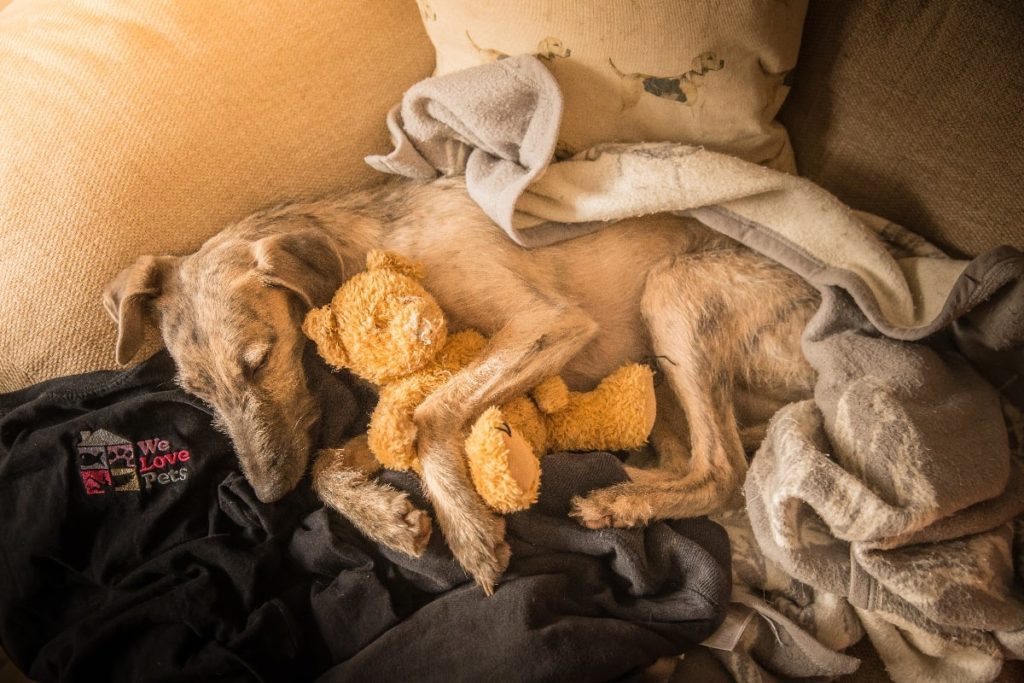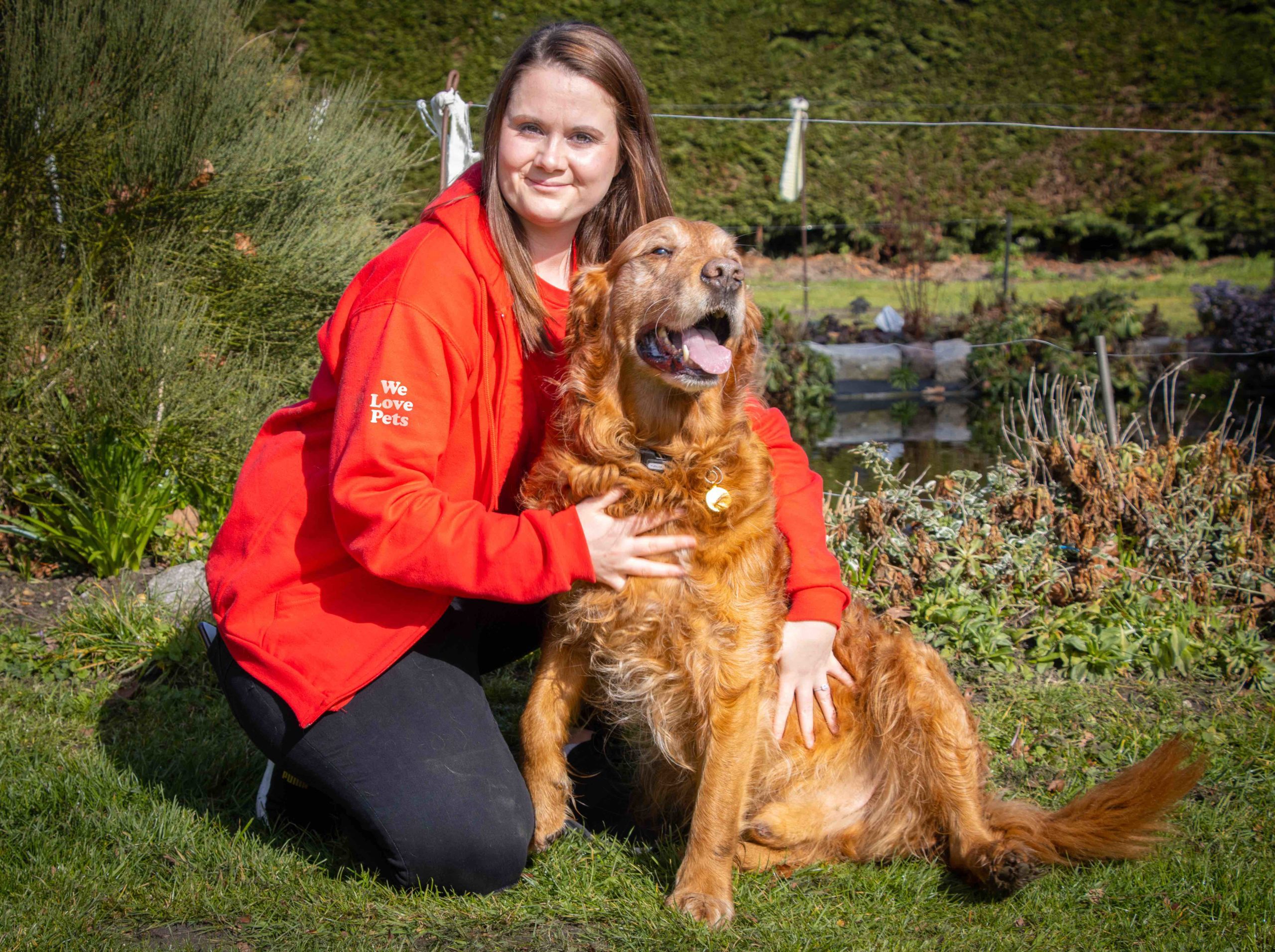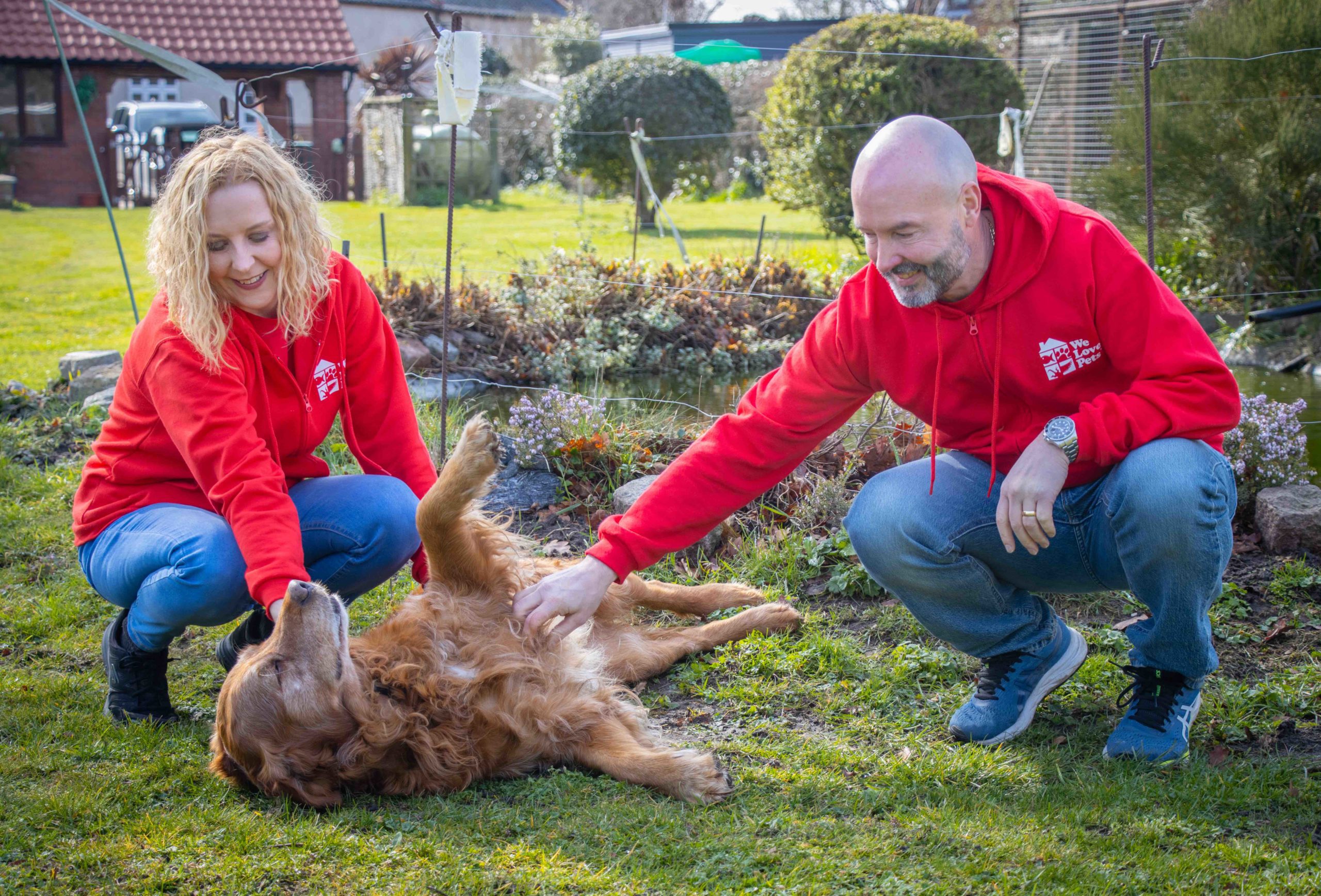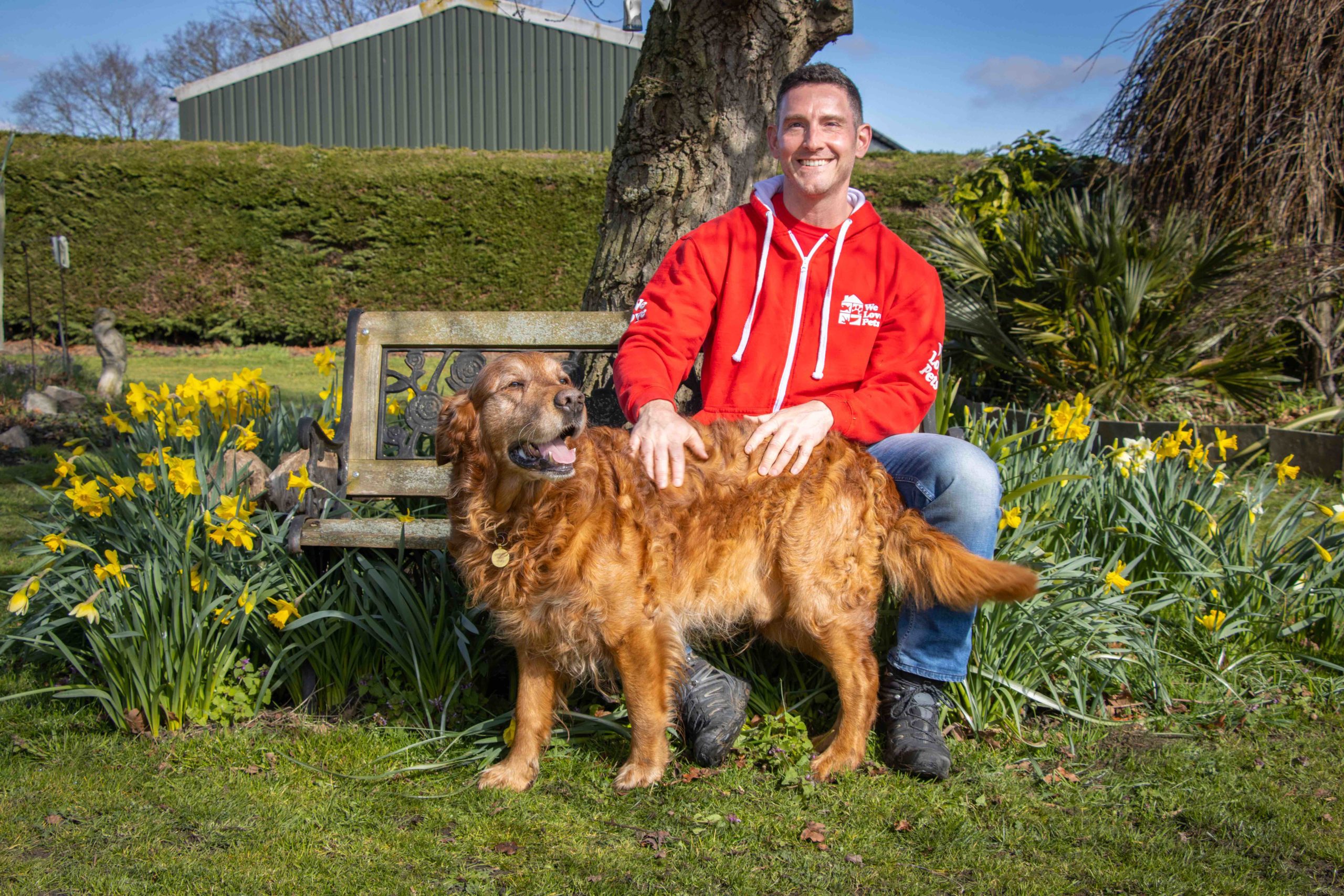Tips for an anxious dog visit to the vets
By Vet Nurse Sophie Baldwin
Just like with a new puppy; taking your newly adopted adult dog to the vet for the first time should be a positive experience for the both of you. This topic is a big area depending on the dog’s individual needs and temperament but we will look at some basic tips on preparing for a visit and what can be practised at home.
Dummy runs
If you have recently welcomed a rescue dog into your family, you may not know what it is like travelling and visiting a vet. Even if you do, your new family member might not be so willing. It can be a good idea to do a dummy run to the vet’s practice before the actual need arises, so neither of you are additionally stressed or worried.
Non-stressful vet visits
To see how your new dog handles a vet visit once they are settled into their new home just set aside some time on a day when you are not time pressured to drive to your vet practice and take the dog into the waiting room (on a lead!). Sit down, give him/ her a treat (or better still ask the receptionist to give a treat) and then walk out again with your dog and drive home.
This will help to create a positive experience for your dog. Your dog has had nothing done to it apart from walking into the waiting room and receiving a treat for calm behaviour. If it is coping well you could pop it on the weighing scales so you know it’s body weight, but judge how things are going when you’re in there. It may also be an idea to save the extra special treats for vet trips only, e.g. lovely pieces of cooked sausage or chicken you can bring along in a little Tupperware container.
Be sure to give your dog lots of praise for his/her calm behaviour.
Other car trips
Some dogs are only ever put in the car to go to the vets so they can often arrive at the practice all worked up as they know where they are going. Make sure your dog gets to go in the car to be taken for lovely walks and not just for being transported to the vets!
Desensitise
All practices welcome, and advocate, owners who want to make their dogs veterinary experience as stress free as possible. Some practices have nurses trained in dog behaviour, additionally, they may run desensitisation courses for dogs that are on the extreme end of the scale with anxiety related to vet visits.
The more worried the dog is the more back steps you may need to do. For example if they start showing signs of being worried before you get them to the practice door don’t push them over the threshold. It may mean that they get their treat just for getting out of the car into the pratice carpark. Pop them back in the car and then perhaps take them for a lovely walk on the drive back from the practice. It is all about positive associations, just like it is for us humans.
There’s no rush
Unfortunately we live in a society that expects instant results as we are all so time pressured, but don’t worry if it takes a few tries to begin to reduce your dogs anxiety, trust and association build up over varying lengths of time for humans, dogs, cats – no two experiences are ever the same. The more effort that is put into trying to help your dog cope with challenging situations the more rewarding the results you will be for you both in the long term. Your new dog will also learn to trust you as a good leader!
Practice handling
Something else that can be praticed at home is handling and touching the different parts of the body that a vet would do in a clinical exam. This is a great thing to teach a new puppy, but something that can be done with dogs of all ages too. At vet school vets are taught to work from the front to the back of the dog’s body on a clinical exam. So this could be a great way to start.
One of the veterinary nurses in your local practice would be happy to show you what you can practice at home. Here is a suggested list;
- Flipping the lip up to examine teeth and gums
- Lifting each ear up in preparation for an otoscope incase your dog ever has an ear infection
- Gently pulling down the lower lids of the eye for eye exams and conjunctiva exams
- Running hands down from shoulders to legs and lifting up each paw to look inbeween toes and pads. This helps the dog get used to having paws handled for nail clipping and the leg being lifted for perhaps an intravenous injection
- Running both hands down either side of the body to feel for lumps and bumps, to body condition score (i.e. feeling the fat layer) and in preparation for a vet to do an abdominal palpation
- Running hands down back legs as was done with the front legs again lifting up paws and examining toes, claws
- Lifting up the tail to get ready for the thermometer temperature check! or perhaps anal gland expression!
- Putting the little plastic lid off a milk carton against the side of the chest to immitate the stethoscope when the vet listens to heart and lungs
- Pinching and releasing the scruff of the neck as the vet does to prepare when they give a sub cutaneous injection
- Gently lifting the head up and back so the dog is looking at the ceiling. Most blood samples are taken from the jugular veins in the neck and in order to find this vein the vet or nurse would need the dogs head in this postion. They have a jugular vein on both the left and right side.
Of course, don’t try to do all these things in one session it’d be enough for anyone to handle instead, pepper them in adding as you go as the dog gets more tolerant. Please be gentle and slow. If your dog is objecting take note of their body language as that is the only way they can communicate with you. If you choose to ignore it that is your fault not theirs! Don’t risk getting yourself bitten but instead perhaps speak to one of the veterinary nurses or vets for advise on how to progress.
Treats and praise
Use treats and praise for when your dog complies to being touched in certain areas as a reward. As most smaller dogs are put on a consulting room table for a clinical exam practice putting your dog on a raised non-slip surface for an exam at home. Many puppy training courses build this into the course to help with getting a young pup used to being examined and preparing them for vet visits.
If all owners did these sorts of handling techniques at home with their dogs as a matter of routine making a game out of it with praise and reward I can guarantee you would be one of your vets favourite clients! But more importantly, your dog will feel so much more relaxed as it will have become used to being handled and touched as part of their everyday routine rather than it being abnormal and scary.
Good luck!
Sophie




